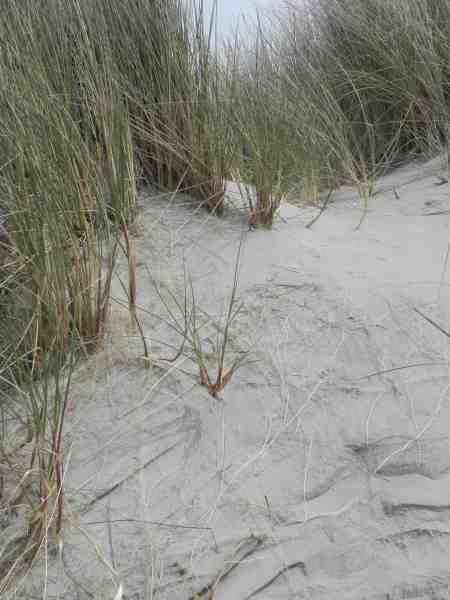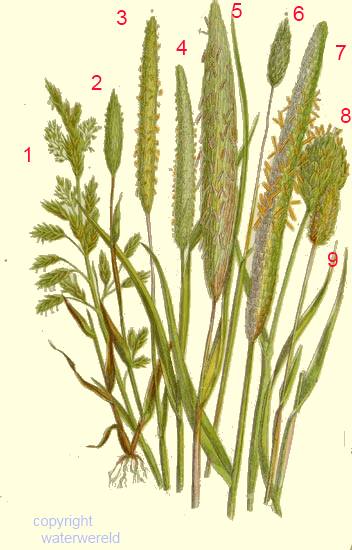European Beachgrass.
Beachgrass plays a major role in the formation
of the dunes. Beachgrass keeps the sand down and
has a tremendous growth rate and reproductive power.
Beachgrass tolerates bare roots and the abrasive
power of the wind. Most important is it resistance
against drought: it rolls its sheets on a roll,
reducing the surface that is exposed to the drought.
Beachgrass in the dunes
By far the most important way of propagation is
are the rhizomes. Its roots don't dig deep in the
sand only some centimeters thus avoiding salt
groundwater. But this is also the weak point of
beachgrass: If it vulnarable for salt water.

Beachgrass in the dunes. The runners or rhizomes
can't be seen here.

European beachgrass or Ammophila arenaria

Mostly members of the Phleum family on a plate of Anne Pratt.
1 Cultivated Canary Grass (Phalaris canariensis)
2 Canary Gras
3 Reed Canary Grass(Ammophila arundinacea)
4 Common Cats-tail Grass(Phleum pratenae)
5 Alpine Cats-tail Grass (Phleum alpinum)
6 Rough Cats-tail Grass (Phleum asperum)
7 Purple-stalked Cats-tail Grass (Phleum boehmeri)
8 Michelian Cats-tail Grass (Phleum michelii)
9 Sea Cats-tail(Phleum arenarium)
|
|